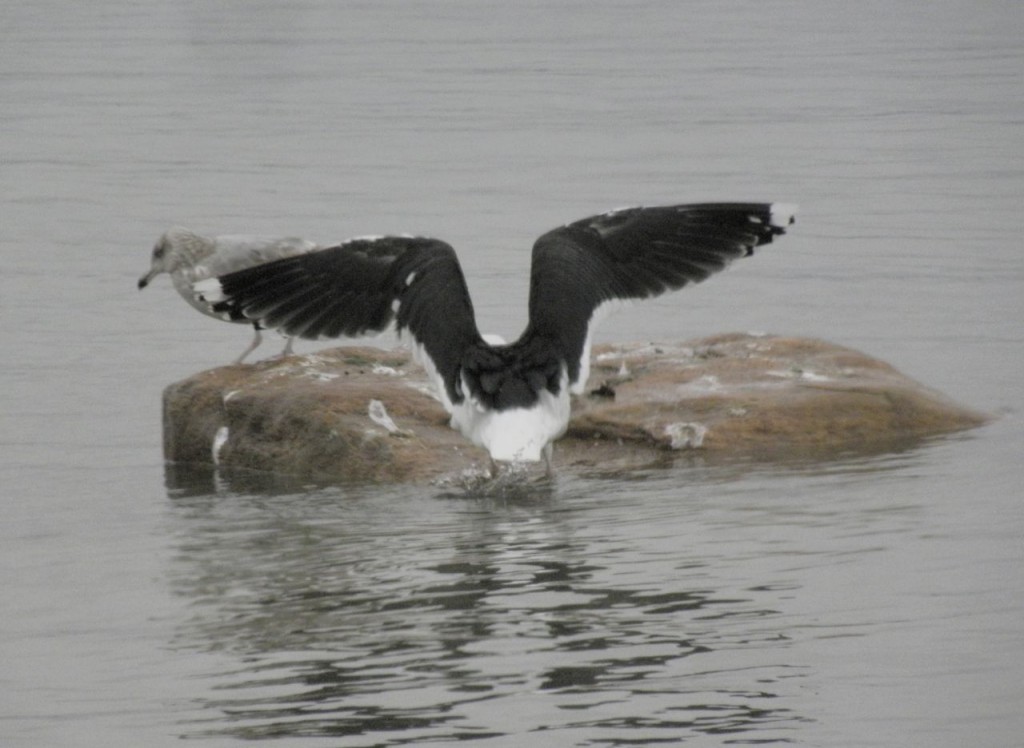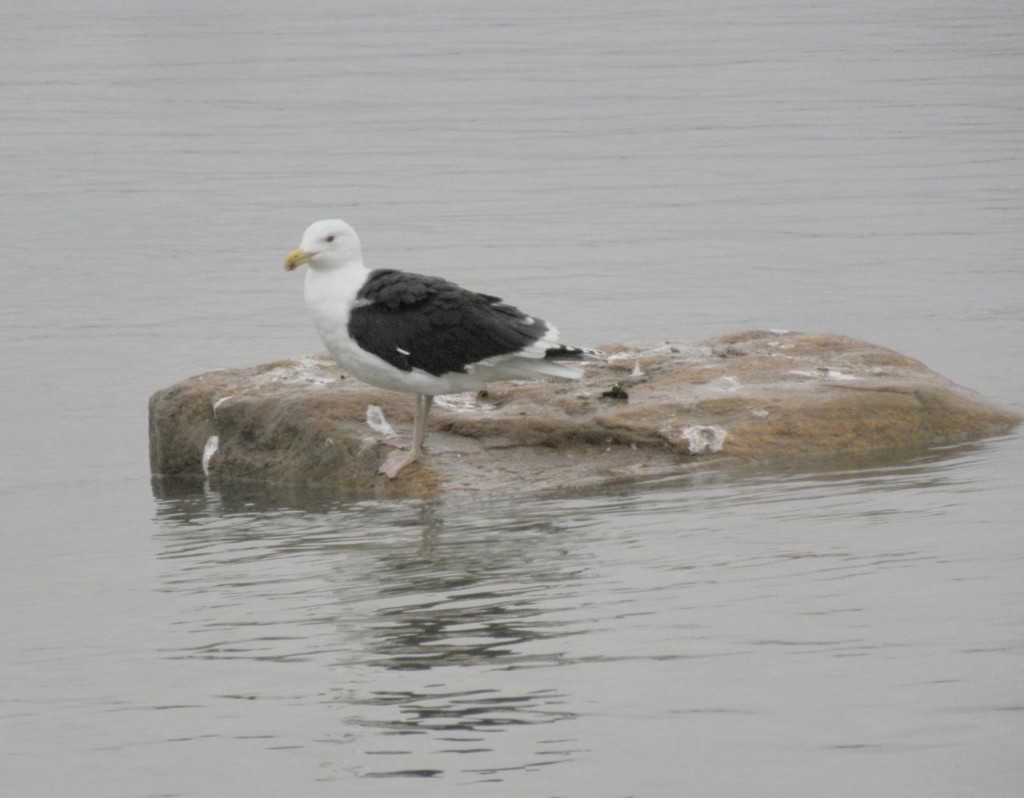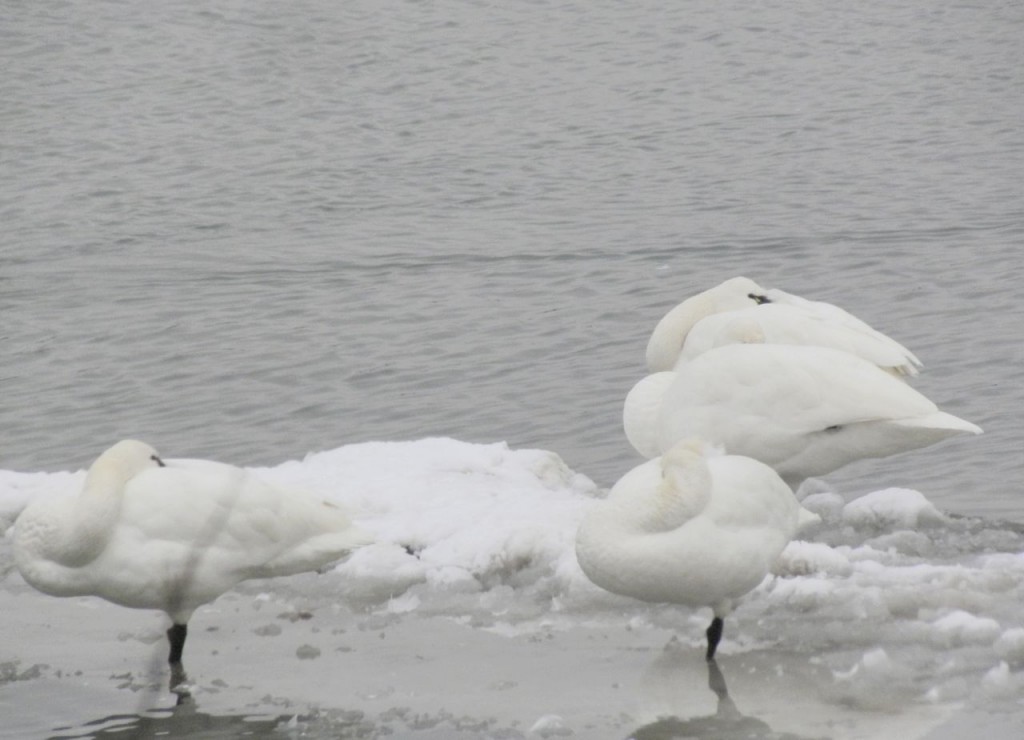February 28 2013. Yesterday I decided to shake off winter and take a look at the waterfowl along the Niagara River. It’s a short river; in some ways it’s more of a large spillway than a river. Rushing just 60 Km. to connect Lakes Erie and Ontario, it’s a stocky and frighteningly powerful waterway, not just for its sheer volume but because it includes the precipitous drop over the famed Niagara Falls. Swans, geese and ducks love it because there’s lots of food and the fast moving water stays open through the most penetratingly cold days of winter.
We started our leisurely riverside drive at Fort Erie and followed the river downstream almost as far as Niagara Falls, which is about half way along the river’s length. We made frequent stops at the many lookouts and parking lots and almost every stop included wonderful birding.
We saw all three Merganser species: hundreds of Red-breasted and Common Mergansers, a single Hooded Merganser, which seemed a little curious at first, but then they are a species which prefers smaller ponds and quiet backwaters. A Hooded Merg’ up close is quite spectacular, Pete Dunne in his Essential Field Guide Companion, describes it as a “Long, slender, low profiled dart of a duck with a histrionic headpiece…” and “…The boldly patterned drake, adorned with a crest that opens and closes like a Chinese fan, is hard to overlook…” For a while I thought it might be my Bird of the Day even though it was rather hard to pick out from among a mass of Buffleheads. However there was much more to come.
For a while we admired a Great Black-backed Gull standing on a rock close to the shore with some Ring-billed and Herring Gulls. When I raised my camera to snatch a photograph it moved away and shoved a young (second winter) Herring Gull aside from a more secure and distant rock.


Sometimes I’ll spot and celebrate a species for its scarcity then quite soon after discover that it’s really quite abundant. That happened to me in Mexico when I spotted my first male Vermillion Flycatcher brilliant atop a mesquite bush, I was exultant, but within an hour I’d found dozens more. Their eye-candy status was not diminished in the least, but it permitted my heart rate to steady a bit. Yesterday the same happened with Canvasbacks and Tundra Swans. First we’d find a small cluster and then as we moved on, more and more. Once, when stepping out of the car we disturbed a near-shore flock of hundreds of Canvasbacks who paddled away nervously and then spontaneously took collective flight in a roaring whoosh. They flew away, circled, watched us for a while, then settled back not too far away. As the historically most-favoured ‘table duck’ they have good reason to maintain a healthy distance.
We came across a small group of six or seven Tundra Swans loafing by the shore and as I looked them over I could hear many more farther off. It turned out there must have been something in the order of a hundred or more up and down the mid reaches of the river, just gathering in small groups and cooing gently among themselves to maintain contact. They were my Birds of the Day, displacing the Hooded Merganser and Great Black-backed Gull, which had both prompted a Wow! response earlier on.

The open water would have been enough to hold this group here all winter, by far the majority of Tundra Swans (hundreds of thousands probably) are wintering along the Atlantic seaboard and around Chesapeake Bay. But within the next couple of weeks they’ll all take advantage of the first signs of spring to move northwards in long straggling skeins heading for their far-north breeding grounds.
Every glance across the river included dozens and sometimes hundreds of: Common Goldeneye, Buffleheads and Greater Scaup. These flocks were liberally sprinkled with many Redheads, Mallards and American Black Ducks. On the far opposite bank, a group of Great Blue Herons high up in some willows set us speculating whether they were over-wintering birds or spring arrivals; or maybe some of each.
If waterfowl populations are, as is generally believed, a sad fraction of what they were before Europeans appeared on the scene, then the Niagara River may at one time have been almost solid with wintering ducks, geese and swans.
Did you go as far as Nigara-on-the Lake. At the dock near the boat club a pair of snow geese have been there since Christmas. The only thing with them is they have no black on them.I think they may be white morph.They are mixed in with Canadian Geese. I have been watching them for about two months but have not been there recently as the Welland river is now full of ducks and geese. Gord g.kozak2@cogeco.ca